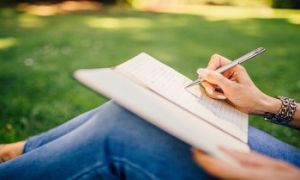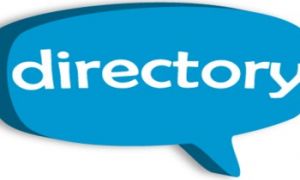One of the most important types of documentation methods that educators needs to be familiar with are “observations”. Observations are crucial for all early childhood settings and are used to build an understanding of a child’s skills, interests, abilities and focuses on what they can do.
PS: We have a variety of EYLF templates available in this site for LDC, FDC and OOSH settings. You can use our Learning Stories Templates, Observations, Family Input, Curriculum Plans, Daily Reflections and more. Each of these templates reflect on and provide clear links to the EYLF and we update them regularly. Remember to check them out in this link here: EYLF Templates
Purpose of Observation
Observations can take place during every day routines, as the child interacts with peers, activities and materials or during a spontaneous event. Before observing a child there has to be a main reason for doing so. Is the purpose of the observation to:
- plan the curriculum (observe child participating and engaging within the environment),
- is it for a child to achieve a goal (observe child during a particular experience and watch for child to achieve goal),
- to describe a child’s skills and abilities (observe child practising their skill at different times throughout the day),
- to inform parents about their child’s learning (observe an aspect of child’s learning that parents told you about).
- When we intentionally plan observations for specific purposes, we can plan how, when and where we will observe.
During the Observation
No two people will see the same child in identical ways. Two open and honest educators can be asked to observe the same child. What they see and interpret will depend on what they decide to look for and their own particular perspectives. (Martin, S Take A Look, 2007).
During an observation the main idea is to look and watch the child being observed. You should pay particular attention to what the child is doing, their interactions with other children and what they are saying. Find a spot close enough to the child so you can hear and observe but far enough so you’re not being intrusive and disruptive. Begin writing down a description of what the child actually does and say. When writing an observation it’s also important to remember:
- Background Details – child’s age, date, setting, children involved, observing educator
- Play Behaviours – focus on play behaviours that you see as it helps us gather information on the child’s development, interest and social skills. For example: playing in the water trough, filling up the bucket with water, fills water to the top etc.
- Positive Language – use positive language. Focus on what the child is doing and avoid using judgemental language. For example: good, silly, excellent (this doesn't describe what’s happening).
- Be Factual – describe only what actually happened
- Be Relevant – include details of direct quotes and information about the context of the observation
- Be objective – provide facts and details during the observation. For example: Maya put teddy on the table picks up a spoon and pretends to feed it – “yummy rice” she says.
- Avoid being subjective – do not add your opinions, personal experiences, thoughts or judgements when writing down observations. For example: Maya has been crying because she misses her mum and is scared she won’t come back…
Remember when documenting the observation note down only what you have seen and heard, focus on the facts, remain judgemental and don’t allow your views, values, feelings or background influence what you note during the observation.
For example:
Grace sat down next to her friend in block area. "You're my friend, can I play with you". She helped her friend by stacking blocks side by side. "Let's make this a house, we can put the dolls inside" Grace said. Grace continued stacking the blocks. "I like our house" she said when she finished.
Interpreting Observations
Once the observation has been documented, you will need to interpret the observation you have written. This means you basically have to make meaning of the child’s learning and understanding through what you have observed. This can be done in the Analysis of Learning.
Analysis of Learning
When writing the analysis of learning you will need to first identify an outcome that the child has achieved during the observation. It’s true that within an observation there could be up to 6 or 7 outcomes that the child has achieved but you need to remember the “purpose” and focus on one or two outcomes. Once you have identified the outcome, you can use what you have written in the observation as evidence and link it to the outcome which you have identified. You can start off the analysis using:
- It is evident…
- Through the observation…
- During the process of observation…
- Jack (child’s name) has shown…
Use the sub outcomes within the EYLF to help you add to the analysis based on what you observed. To do this, choose the relevant EYLF sub outcomes. Also include evidence from your observation to tie it all in together.
For example:
Through this observation, it is evident that Grace engages in and contributes to shared play experiences – Grace helped her friend stacking blocks side by side (1.4.2). Grace has also shown that she recognises the contributions she makes to shared experiences – “Let’s make a house” “I like our house” (3.1.13)
Follow Up
The next step is to think of a follow up experience that the child can participate in to further extend upon their learning, or to practice a skill, or to develop an interest. It may take some time to think of a necessary activity in order for it to be meaningful for the child. It has to be related to the observation and the follow up really depends on what you want to focus on.
For example:
To follow up and extend upon Grace’s above experience we will support her interest by offering pattern blocks with pattern cards for her to follow. Learning Outcome 4.2.2 - create and use representation to organise, record and communicate mathematical ideas and concepts.
Now since in the Analysis of Learning I had already pointed up what outcomes the child has achieved through the observation, my follow up experience doesn't need to be for that particular outcome which I had already mentioned. I can think of another outcome for the follow up experience. Thinking of another outcome supports the child’s extension of leaning and enables the child to achieve more than one outcome during the observation cycle.
Usually with the follow up you also need to write a quick evaluation on how the child did with the experience. There is no need to add a photo (although it’s completely up to you) and you just write a summary on how the child achieved the learning outcome through the follow up experience.
For example:
Grace used the pattern blocks to create the pictures from the pattern cards. She first selected a picture card, sorted through the pattern blocks to find the necessary blocks to use and then organised her blocks to create her picture from the card. “I got 2 triangles, for the cat’s ears and a circle for the cat’s nose” Grace said.
Linking to the Curriculum Plan
The observation experience needs to be linked to the curriculum plan/program for educators to keep track of the observation and to identify when the follow up experience is to take place. It also shows that you’re planning for individual learning and development.
When linking the observation follow up experience to the curriculum plan you just need to add the experience, the outcome and the code of the child (or) child’s name who the follow up experience is for.
For example:
Grace: Pattern Blocks with Picture Cards – 4.2.2
Types of Observations
While documenting a child’s observation there are different types of observation formats that can be used. Choosing the right observation format really depends on the purpose of the observation. Observations can be very brief such as anecdotes, or jottings. While other observations formats can long and details descriptions such as a running record. Here are some different types of observation to document children’s learning:
- Anecdotal Record – write a short story of the child engaging in play. Anecdotal records are written in past tense. Observation starts when the child begins the experience and ends when the child stops participating in the experience. It’s a useful method to record events or actions based on the child’s strengths, interests, development and needs.
- Jottings – usually short details of significant events, behaviours or conversations. A brief paragraph focusing on significant behaviours and information regarding the child. It is useful method to use in conjunction with photos and work samples.
- Running Records – put into writing exactly what is being seen and provides quite a lot of detailed information and written in present tense. It’s a useful method to record any area of development, note down child’s interests as they occur and provides a holistic approach to observing a child.
- Photo Observations – capture a child at play, or practising a skill or during social skills and interactions.
- Time Samples – provide information on what a child is doing at regular intervals (for e.g. every 15 minutes during the morning routine). It’s a useful method to use to look at a child’s overall participation within the learning environment and to observe a child’s overall development in a range of contexts.
- Socio-grams – used for preschool children to observe patterns of friendships. A chart is created where child indicates their friendship preferences. It’s a useful method that indicates which child needs more support in making friends.
- Event Samples – helps to find out how often a specific type of behaviour takes place within the environment and provides evidence to show whether incidents and continuing or have stopped. It’s a useful method to focus on a particular response of a child (e.g. how often a child throws a tantrum).
There are a range of methods for observing children and you shouldn't stick with one method throughout the year. Try different observation methods each month. Anecdotal, jottings, photo obs, learning stories etc. These are all various ways of observing and to assess a child's overall development a variety of observation methods should be used.
Frequently Asked Questions
Here are a collection of the frequent questions on observations that have been asked by students and educators from the Aussie Childcare Network forum.
Q: How many Observations are required per child?
A: As for observations one a month per child is sufficient enough. Within your weekly program you should also be following up any emerging interests that occurs within the room and for individual children which should also be noted and done on an ongoing daily basis so having observations once per month is fine.
Q: Can I display the Observations for parents to see?
A: Observations should NOT be displayed for all parents to see. These are to be kept confidential and only should be seen by the child's family. Observations can be kept in each child's portfolio but not displayed for all to see.
Q: Does A Room Leader/Co-Ordinator have to complete all Child Observations themselves?
A: No, just because you are the room leader/coordinator it doesn't mean you have to complete all the child obs on your own. Individual observations can be grouped per educator within the room so everyone can have a group of children they can observe each day.
Based on the days children attend, work out how many children need to be observed each day in order to complete a monthly ob per child and select educators to observe specific children per day. You can use a calendar for this, add child's name on the day along with the educator of who will be observing which child. However, a room leader/co-ordinator should always re-read the observations done within the room by other educators.
Q: Can Observations be added into each child’s Individual Portfolio?
A: Yes, you can add the child’s observations to their portfolio. You will also need to keep a record of each child’s observation in their file.
Q: Should Observations be shared with the child’s parent?
A: Yes, observations should be shared with each family. It gives them an understanding of their child’s development and learning. It provides parents an opportunity to see their child’s learning in “action” and what approach you are going to take to further extend on their child’s skills and abilities.
Observations are a necessity as part of an ongoing assessment and it is our responsibility as educators to monitor the progress of each child in a way that can be shared with parents, children and other educators. Effective observations will benefit each individual child, ensuring that the plans and experiences that follow have been considered based on thorough knowledge of the child and purposeful observations.
You can find a variety of Observation templates and completed samples on our Templates page: Observation Templates
References:
The Heart of Authentic Assessment (2009) – Results Matter Colorado Department OF Education


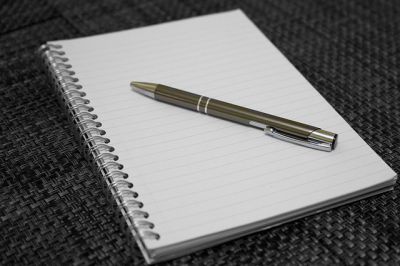
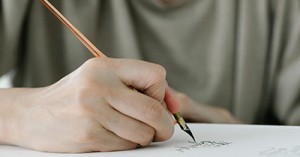
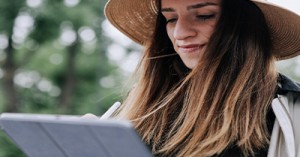
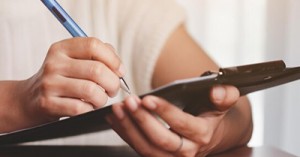
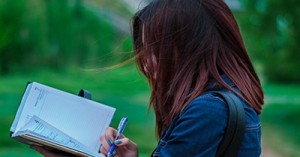
 Here is the list of the EYLF Learning Outcomes that you can use as a guide or reference for your documentation and planning. The EYLF
Here is the list of the EYLF Learning Outcomes that you can use as a guide or reference for your documentation and planning. The EYLF The EYLF is a guide which consists of Principles, Practices and 5 main Learning Outcomes along with each of their sub outcomes, based on identity,
The EYLF is a guide which consists of Principles, Practices and 5 main Learning Outcomes along with each of their sub outcomes, based on identity, This is a guide on How to Write a Learning Story. It provides information on What Is A Learning Story, Writing A Learning Story, Sample
This is a guide on How to Write a Learning Story. It provides information on What Is A Learning Story, Writing A Learning Story, Sample One of the most important types of documentation methods that educators needs to be familiar with are “observations”. Observations are crucial for all early childhood
One of the most important types of documentation methods that educators needs to be familiar with are “observations”. Observations are crucial for all early childhood To support children achieve learning outcomes from the EYLF Framework, the following list gives educators examples of how to promote children's learning in each individual
To support children achieve learning outcomes from the EYLF Framework, the following list gives educators examples of how to promote children's learning in each individual Reflective practice is learning from everyday situations and issues and concerns that arise which form part of our daily routine while working in an early
Reflective practice is learning from everyday situations and issues and concerns that arise which form part of our daily routine while working in an early Within Australia, Programming and Planning is reflected and supported by the Early Years Learning Framework. Educators within early childhood settings, use the EYLF to guide
Within Australia, Programming and Planning is reflected and supported by the Early Years Learning Framework. Educators within early childhood settings, use the EYLF to guide When observing children, it's important that we use a range of different observation methods from running records, learning stories to photographs and work samples. Using
When observing children, it's important that we use a range of different observation methods from running records, learning stories to photographs and work samples. Using This is a guide for educators on what to observe under each sub learning outcome from the EYLF Framework, when a child is engaged in
This is a guide for educators on what to observe under each sub learning outcome from the EYLF Framework, when a child is engaged in The Early Years Learning Framework describes the curriculum as “all the interactions, experiences, activities, routines and events, planned and unplanned, that occur in an environment
The Early Years Learning Framework describes the curriculum as “all the interactions, experiences, activities, routines and events, planned and unplanned, that occur in an environment